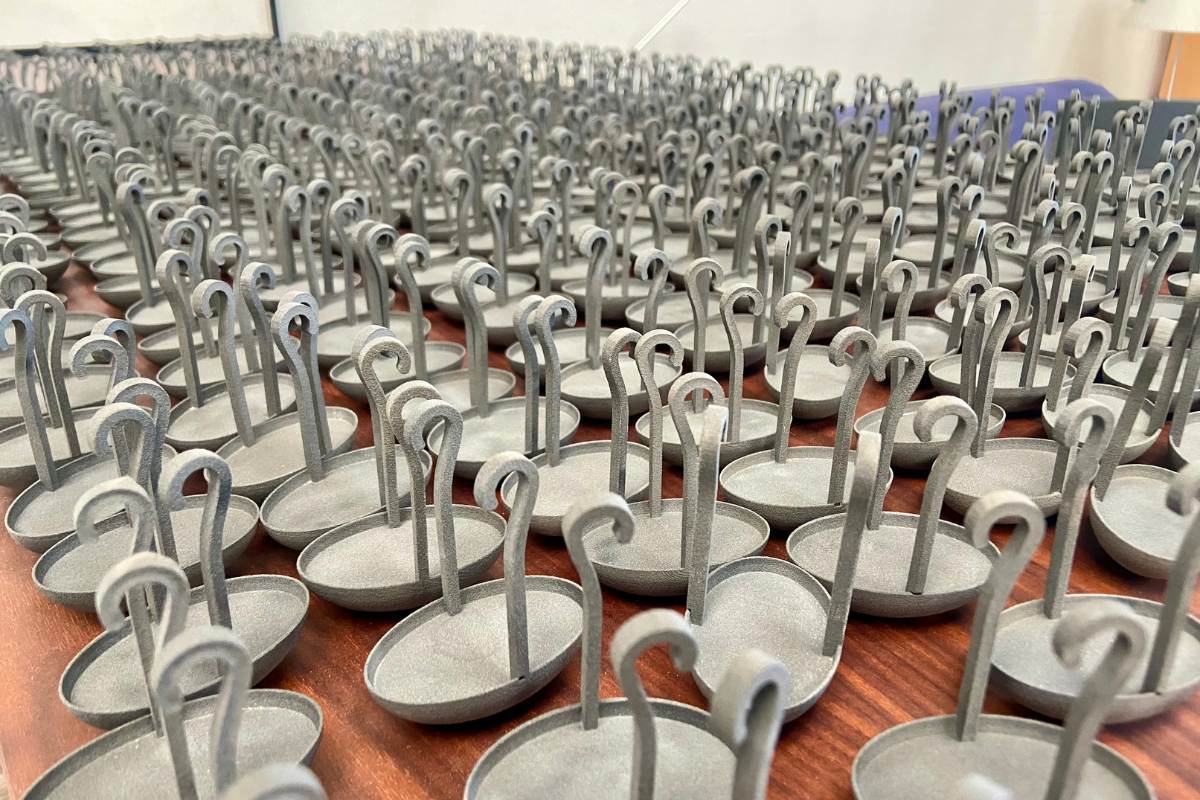If you have your design ready, the next step is to make sure the file is perfect so we can print it without any problems. Here I explain all you need to know to prepare and send your STL file to Additium 3D and get the best quality in your printed piece.
What is an STL file and why is it essential for 3D printing?
The STL file is the standard format we use for 3D printing. This file converts your design into a mesh of triangles that the printer can interpret to produce your part layer by layer.
At Additium 3D, we almost always work with STL because it is the most reliable and compatible with our equipment.
What do you need to consider when preparing your STL file for submission?
- File format and qualityIdeally, your STL should be in binary format, because it is lighter and faster to process. Also check that the mesh is closed and without errors, to avoid the part having faults.
- Units of measurementMake sure that the file is in millimetres, which is the unit we normally work with. This avoids size confusion.
- Mesh resolutionIf the file has too many triangles, it can be very heavy and slow to print. If it has too few, the detail is lost. We help you to balance it if necessary.
What if you have the design in another CAD format, how to convert it to STL?
If your design is in CAD formats such as STEP, IGES or DWG, you have to export it to STL before sending it. CAD programs usually have the option "Export as STL" or "Save as STL".
If you have any doubts with this step, you can also send us the CAD file and we will help you to convert it so that everything is ready to print.
Why is it better to send an STL rather than other formats such as OBJ?
Although OBJ stores more visual information, what matters for printing is the geometry of the part, and there the STL is the king. At Additium 3D we optimise your STL so that the print comes out perfect without losing detail.
Where can you find resources to review or improve your STL file before submitting it?
If you want to make sure that the file is perfect, you can use free software such as Meshmixer o Netfabb Basic to repair possible faults in the mesh.
If you prefer, we check the file before printing and we will notify you if we detect any problems.
How to send the STL file to Additium 3D?
You can send us your STL file via our contact form or by email. If the file is very heavy, we can coordinate a file transfer platform such as WeTransfer or Google Drive.
Always include in the shipment:
- Brief description of the project.
- Preferred material or finish (if you already know).
- Desired delivery time.
This helps us to give you a quick and accurate quote.
Do you want to convert your STL to other formats like DXF?
If you need a 2D drawing or profile for cutting or milling, we can help you convert your STL to DXF with software such as Fusion 360 or AutoCAD. Just ask for it when you send us your design.
At Additium 3D we take care of every detail of your file so that the printing process is a success.
We don't just print; we control the whole process so that the final piece is exactly as you imagine it. We check the file, optimise the printing and accompany you throughout the process.
If you have doubts or are not sure how to prepare your file, ask us without obligation. We are here to make your project a success.
Other frequently asked questions about STL files 3D printing
For industrial 3D printing, the STL file is the most widely used and reliable. OBJ can store extra information such as colours and textures, but for manufacturing parts what really matters is the geometry, and there STL is the standard. At Additium 3D we work mainly with STL because it ensures an accurate interpretation of the design.
Generally, STL files in binary format are used because they are lighter and easier to handle. The important thing is that the mesh is closed and error-free so that the part can be printed without any problems.
There are many platforms where you can download 3D models ready to print, such as Thingiverse, MyMiniFactory or Cults3D. However, for industrial production and customised parts, the ideal is to work with your own or customised design that suits your needs.
CAD programs often have an option to export or save the design in STL format. If you use software like Fusion 360, SolidWorks or AutoCAD, just select "Export as STL" and adjust the resolution options. If you have any doubts, Additium 3D can help you with this conversion.
To convert an STL (3D file) to DXF (2D file), which is used for cutting or milling, specialised software such as Fusion 360 or AutoCAD is required. The conversion consists of extracting profiles or planar sections from the 3D model. We can perform this conversion for you on request.
The DXF format is very popular for technical and CNC drawing, and is used by programs such as AutoCAD, DraftSight, Fusion 360, CorelDRAW, among others. If you need a DXF drawing for your project, we can help you prepare it from your STL file.







